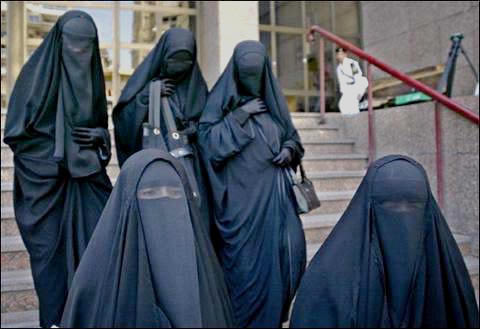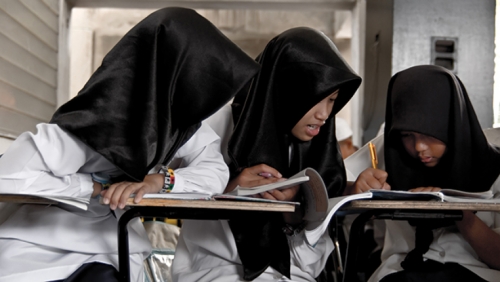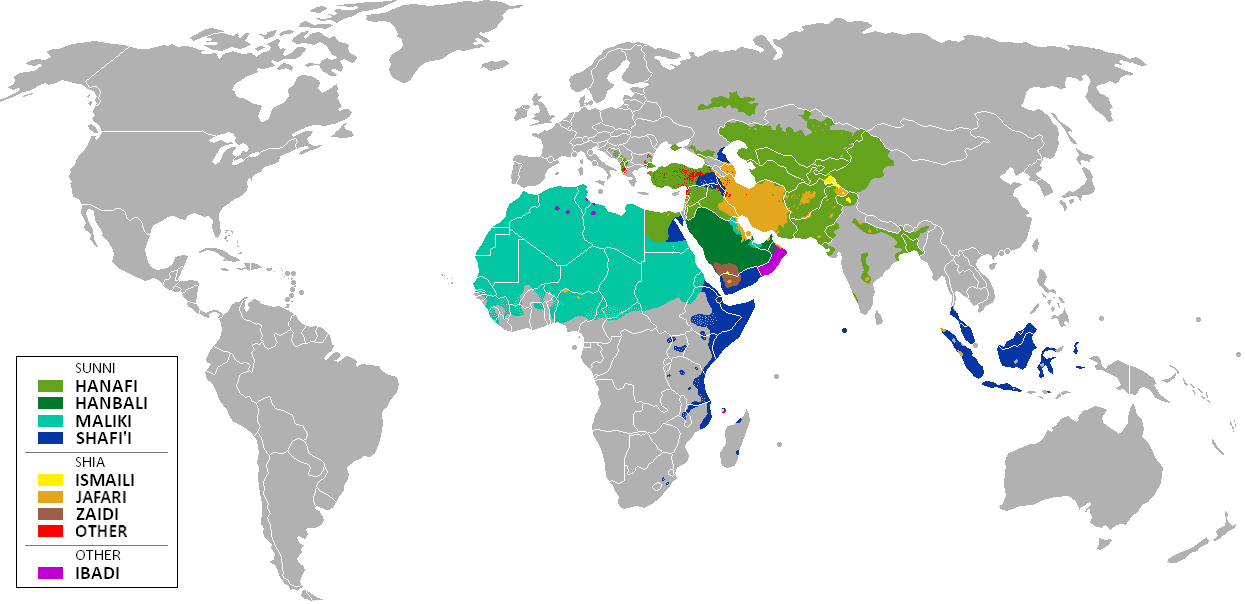Islamic Jurisprudence & Law
 Islamic law is oftentimes used as a synonym for sharia. However, we must understand this Islamic law to be a law created by men, and not the law of God which itself is perforce unknown and unknowable. In fact, the Arabic term sharia literally means “path,” and is used in the Quran to refer to God’s law.
Islamic law is oftentimes used as a synonym for sharia. However, we must understand this Islamic law to be a law created by men, and not the law of God which itself is perforce unknown and unknowable. In fact, the Arabic term sharia literally means “path,” and is used in the Quran to refer to God’s law.
Because God’s law/sharia in the Quran was not as specific as one may have wished, and once the Prophet was no longer living to interpret the divine laws for the Muslim community, highly educated scholars and jurists were entrusted with the responsibility of elucidating God’s law. It is the body of laws that these ninth- and tenth-century jurists developed that came to be known as Islamic jurisprudence (fiqh), a human legal system that stands in contrast to sharia, which is God’s Law. The Arabic word fiqh literally means “understanding.”
By the end of the eleventh century four schools of Islamic jurisprudence emerged, each named after its leading interpreter: Maliki, Shafii, Hanafi and Hanbali. Each of them struggled to interpret the few Quranic verses on women’s dress and to name with certainty those body parts that were to be concealed.
Muslim Jurists developed a five-part moral scale to evaluate every conceivable human act from mandatory, to recommended, to morally neutral or permissible, to reprehensible to prohibited. Such a scale was meant to guide humans in understanding which acts they were required to perform and which ones to avoid if they were to obey God’s law.
What does Islamic law say about Muslim women’s proper dress?


Interestingly, the juridical discussion of women’s attire did not treat the specific question of hijab, or appropriate Islamic dress to be worn by women in public. Muslim women’s dress was understood to be part of Islamic etiquette and not of required Islamic behaviors.
This means that in traditional Islamic law, the whole debate over clothing fell into the legal categories of appropriate Islamic conduct (wajib and adab), rather than mandatory behaviors (fard) such as praying, fasting during Ramadan or giving alms to the poor. From the perspective of early Islamic law, and in contrast to the way many Muslims continue to assume, failing to cover one’s private parts (Arabic awrah) constitutes only a minor sin for Muslims, not a major sin. Donning hijabcan thus only be a “recommended” action, not a “required” behavior.
The only element debated by Muslim jurists was whether a woman’s hands and face were to be concealed or whether they could be left uncovered. On this specific matter, the four schools of Islamic jurisprudence differ. (See the examples with the two photos above.)
Implications for Muslim women today
Muslims are expected to follow the rituals and adopt the practices (including those related to veiling) of the Muslim-majority society they live in. These practices are defined by the particular school of Islamic law that the country observes.
The Hanbali school, like the Shafii, urge the Muslim communities living within their jurisdiction, to follow a more conservative dress code than the Hanafi and the Maliki. And this is one of the primary reasons Muslim women living in Saudi Arabia or Indonesia dress differently from those in Egypt or Morocco.
Distribution of the four schools of Islamic jurisprudence
The Hanafi school is the most prevalent one in Muslim-majority societies, with followers in about one-third of them, including:
India
Pakistan
Bangladesh
Afghanistan
Central Asia
The Caucasus
The Balkans
Turkey
Parts of Iraq
Egypt
The Hanbali, the most conservative school of Islamic jurisprudence, has most of its adherents in Saudi Arabia.
The Maliki school, the second most-dominant school, prevails in countries such as:
The Arabian Gulf States (Kuwait, Qatar, Bahrain, Dubai and Abu Dhabi)
East and West African countries (upper Egypt, Sudan, Tunisia, Algeria, Libya, Morocco, Mali, Nigeria, Chad, Niger, Senegal, Mauritania)
Syria
Yemen
The Shafii school is widespread in countries such as:
Indonesia
Malaysia
Singapore
Sri Lanka
Maldives
Palestine
Jordan
Lebanon
Yemen
East Africa (Somalia, Kenya, Tanzania)
Map: Wikimedia Commons.

